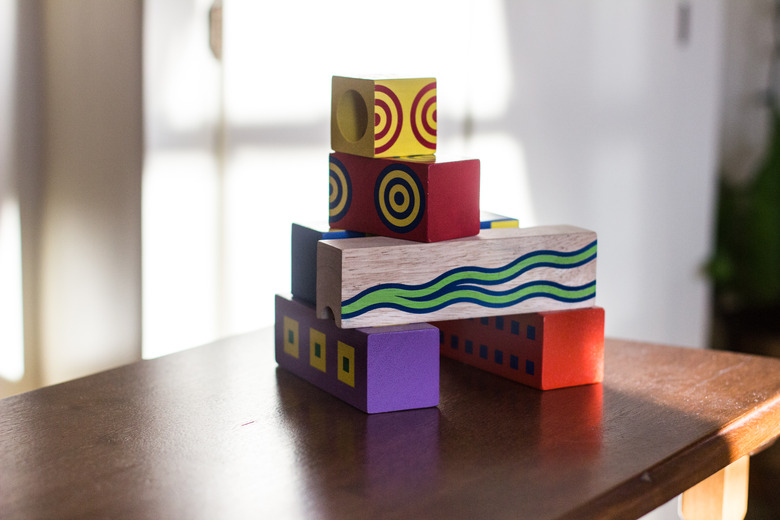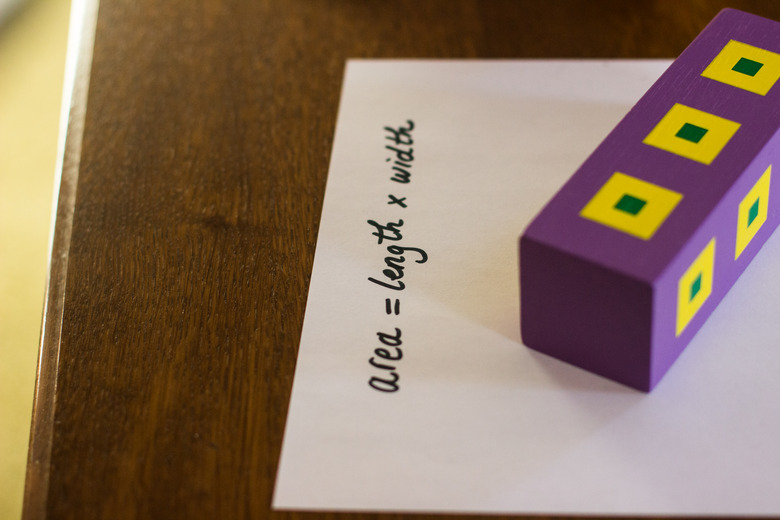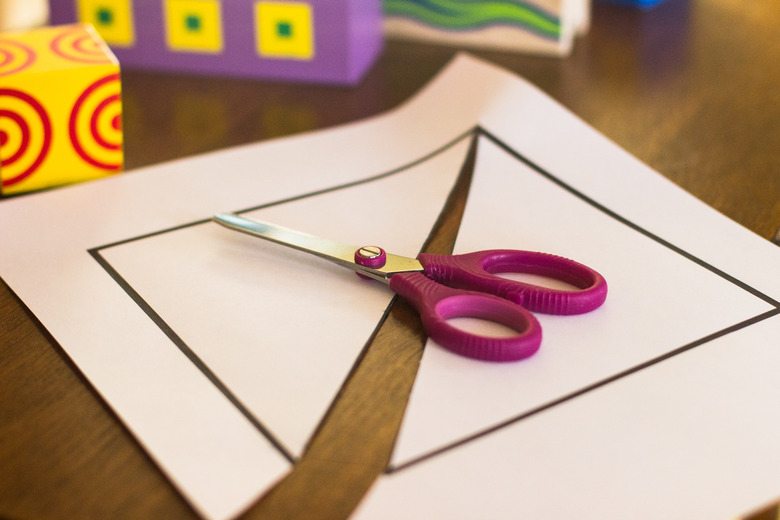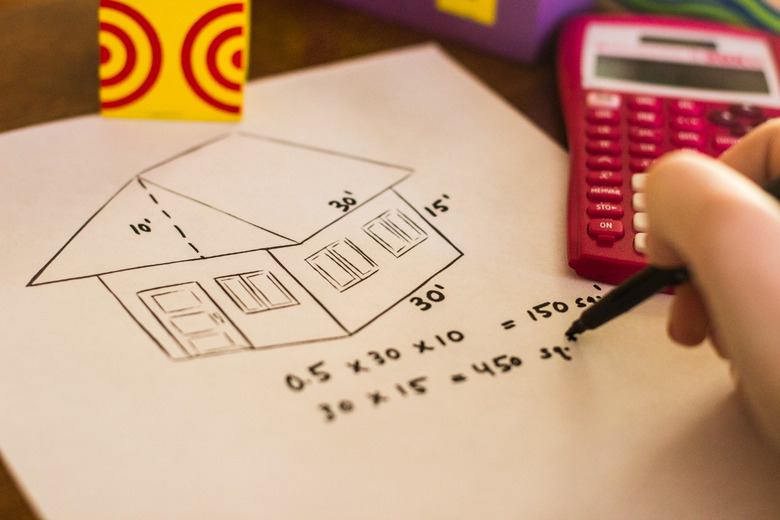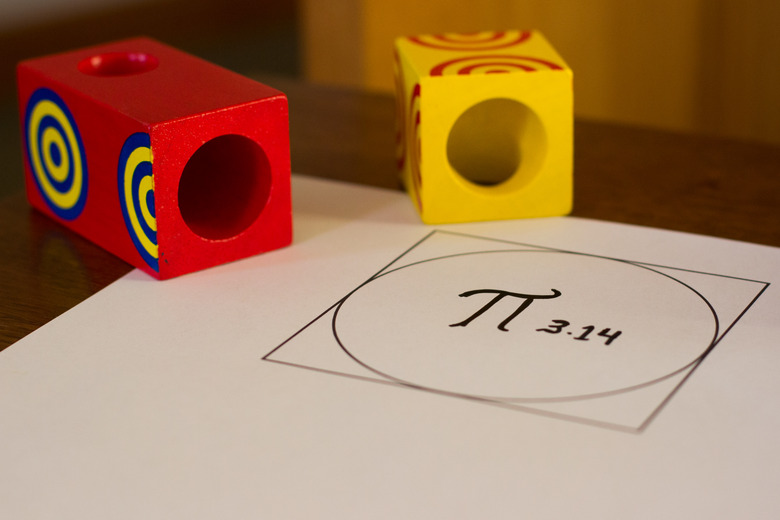How To Teach Geometric Area To Kids
If your child complains that his sister's bedroom has more floor space than his room, he has already begun to compare geometric areas. The National Council of Teachers of Math notes that third through fifth graders should test properties of geometric area and that by middle school, they should expand their understanding to related concepts, such as volume. Starting with squares and rectangles, your child can learn to compute the areas of triangles, irregular shapes and circles.
Rectangles
Rectangles
To understand area, children need to experience the concept of space on a flat surface, according to Khan Academy. As your child examines rectangles or squares divided into grids of unit squares, give them this formula: Area = length x width. Then, provide your child with a concrete approach to comparing areas. On a playground, create a chalk grid that measures 4 by 6 feet, or find floor tiles that have the same dimensions. Give your child a 16-foot long string, marked at one foot intervals. Ask your child to outline a 4-by-4 foot area and count the squares within. Once your child has counted 16 squares, have him use the same 16-foot string to outline a 2-by-6 rectangle that has 12 unit squares. Your child will discover that the same 16-foot string can enclose different areas of space.
Triangles
Triangles
Using an activity sheet showing grids of squares or rectangles, your child can transfer his knowledge to triangles. Have your child draw a diagonal line through a 4-by-4 square and then to cut it in half, creating identical triangles. Since the original square contained 16 unit squares, each triangle should have one half of that number — in other words — eight. To verify, count the complete squares and the half-unit squares in each triangle. As your child measures the height of the triangle at its highest point and the base, which is the side perpendicular to that height, your child learns the formula: area = 0.5 base x height.
Irregular Shapes
Irregular Shapes
Determining the area of an irregular shape, like the front of a house, can frustrate students. To help your child perceive the shapes, make a scaled drawing of a triangular roof that has a 30-foot base and a 10-foot height, which rests on a rectangle 30 feet long and 15 feet wide. Help your child plug in the numbers for the triangle, using the formula: area = 0.5 x 30 x 10. Calculate to get the answer of 150 square feet. For the lower rectangular part of the house, have your child apply this formula: area = 30 x 15 or 450 square feet. Combining the triangle and rectangle equals 600 square feet of two-dimensional space.
Circles
Circles
Initially, have your child draw a 10-by-10 square and place a circle within it, touching the sides. Once your child understands that the circle will have less area than the square, introduce the rounded value of pi, which has a value of 3.14 and this formula: radius = diameter x 0.5. For example, a circle with a diameter of 10 has a radius of 5. As your child learns the complete formula of area = pi x radius squared, he can multiply 3.14 x 5^2, to compute an area of 78.5 square units within the circle.
References
- National Council of Teachers of Math: Geometry Standard
- Khan Academy: Introduction to Area and Unit Squares
- National Council of Teachers of Math; Illuminations: Squares and Rectangles
- National Council of Teachers of Math; Illuminations: Discovering the Area Formula for Triangles
- Khan Academy: Area of a Circle
Cite This Article
MLA
Ehlen, Peg. "How To Teach Geometric Area To Kids" sciencing.com, https://www.sciencing.com/teach-geometric-area-kids-2090533/. 24 April 2017.
APA
Ehlen, Peg. (2017, April 24). How To Teach Geometric Area To Kids. sciencing.com. Retrieved from https://www.sciencing.com/teach-geometric-area-kids-2090533/
Chicago
Ehlen, Peg. How To Teach Geometric Area To Kids last modified March 24, 2022. https://www.sciencing.com/teach-geometric-area-kids-2090533/
